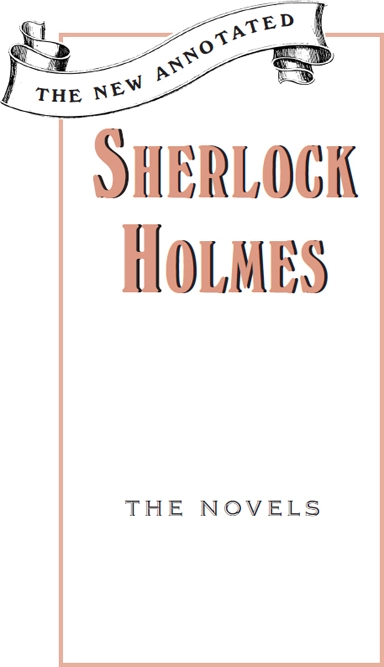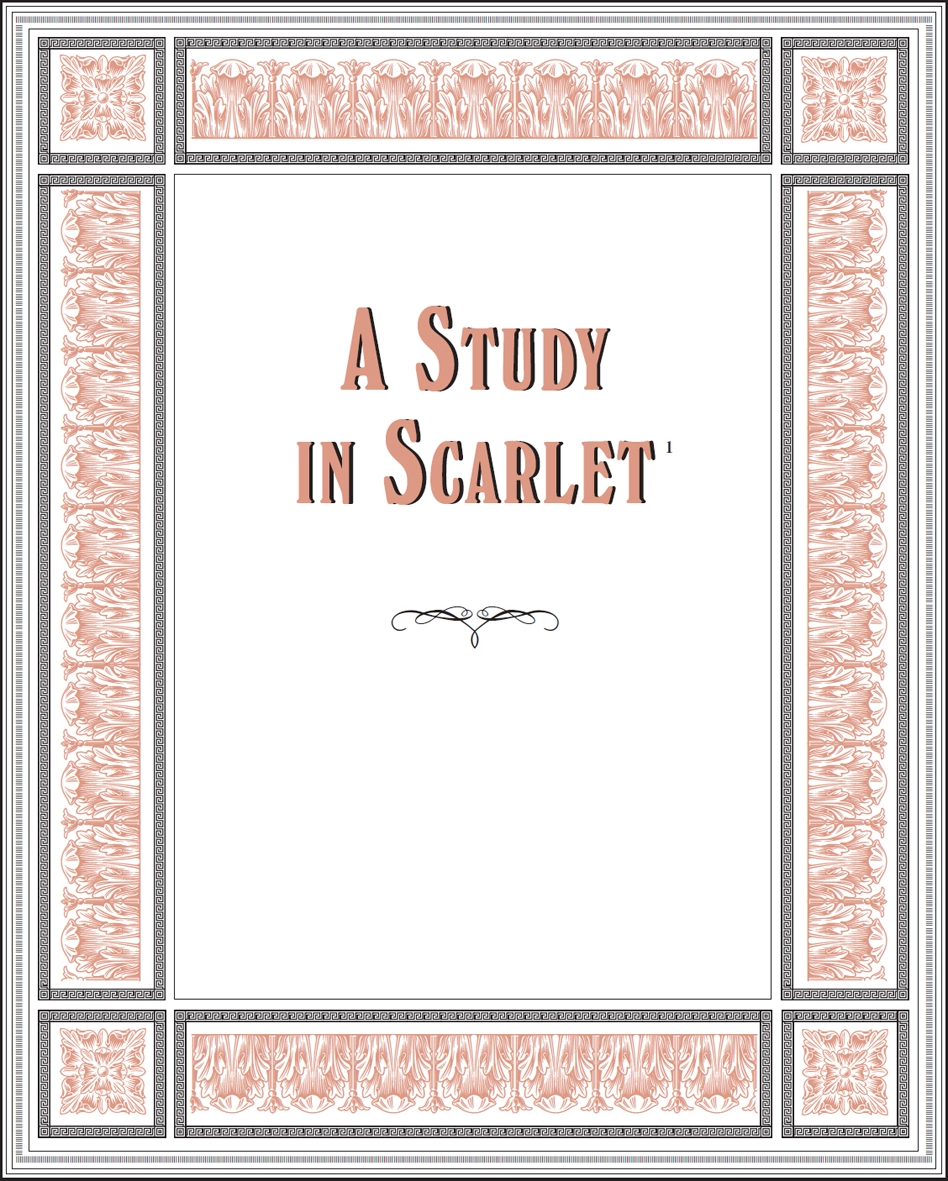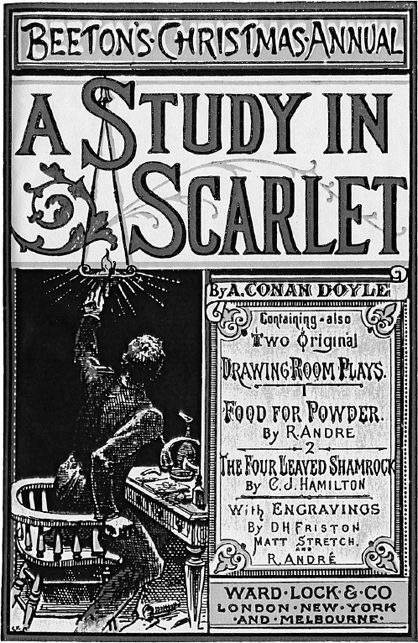To avoid constant cross-reference to other volumes, and reflecting its separate publication, this volume repeats the relevant parts of notes that appear in the first two volumes. All in all, here is the complete record of the career of Mr. Sherlock Holmes. For the first-time reader of these tales, my best advice is to plunge immediately into the stories, skipping the introduction. Whether this is your first reading or your fifty-first reading of the Canon, I wish you joy in the experience, and I hope that you find that this edition enriches it.


A Study in Scarlet
Scholars and casual Sherlockians alike have come to regard A Study in Scarlet (1887) as a fascinating book of Genesis, as it marked the very first public appearance of Sherlock Holmes. Here, after a brief glimpse of Watson’s life before Baker Street, we are witness to a momentous occasion: the initial meeting between Sherlock Holmes and his “Boswell,” Dr. John H. Watson, in a hospital laboratory. (“I’ve found it! I’ve found it,” are Holmes’s first words, appropriately enough.) The two men decide to share lodgings, and Watson discovers that his new roommate has an unorthodox occupation, as the world’s sole consulting detective. Soon enough, the unsuspecting doctor finds himself involved in a dark tale of revenge and murder. Central to Watson’s account of Holmes’s brilliant detection is a “flashback”-type narrative, penned by an unknown author, of the Mormons in Utah under the leadership of Brigham Young. Arresting and lively, the account nonetheless reflects Victorian England’s distorted views of the Mormons and their history in the American West.
When one compares this picture of the youthful Holmes (he was only twenty-seven when he met Watson) to the balance of the Canon, it is apparent that the Master’s character changed little over the years of his remarkable career. His secretiveness, his bohemian habits, and his low opinion of the official police are all on display here; and while Holmes’s drug use is only hinted at, his other vices and virtues are quickly revealed to the reader (although Watson’s early assessments of Holmes’s “limits” are soon disproved). The author of A Study in Scarlet may have earned little commercial reward from the book’s early publication, but the stage was set for what would later become the most successful series of stories ever published.
1 A Study in Scarlet was published in Beeton’s Christmas Annual for 1887, alongside two plays: Food for Powder, by R. André, and The Four-Leaved Shamrock, by C. J. Hamilton. The first book edition of A Study in Scarlet was published by Ward, Lock & Co. in July 1888; the first American edition was published in 1890 by J. B. Lippincott Company. The 1893 edition published by Ward, Lock & Bowden Limited (the successors to the original publisher) added a “Publishers’ Note to this Edition,” as follows: “As it is in ‘A Study in Scarlet’ that Mr. Sherlock Holmes is first introduced to the public, and his methods of work described, it occurred to the publishers of the volume that a paper on ‘Sherlock Holmes,’ which Dr. Doyle’s old master, Dr. Joseph Bell, the original of Sherlock Holmes, contributed recently to The Bookman, would greatly interest readers who did not see it when it appeared in that publication.

Beeton’s Christmas Annual (1887).
Artist unknown
“Dr. Bell’s ‘intuitive powers’ in dealing with his patients were, so his pupil, Dr. Doyle, tells us in the pages of The Strand Magazine, ‘simply marvellous.’ Case No. 1 would step up.
“I see,” said Mr. Bell, “you’re suffering from drink. You even carry a flask in the inside breast pocket of your coat.”
Another case would come forward.
“Cobbler, I see.” Then he would turn to the students, and point out to them that the inside of the knee of the man’s trousers was worn.
1 comment